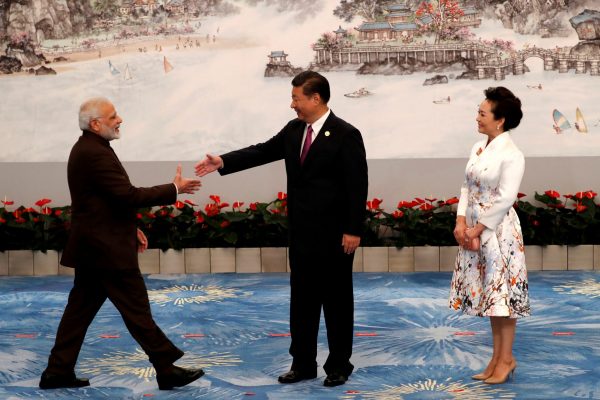China wonders what is driving India’s apparent lack of pragmatism in choosing to deny itself the fruits of Chinese economic development and investment, especially when many countries are willing. India’s refusal to attend the Belt and Road Forum was seen as narrow-minded in Beijing. China pointed out that even if India had serious concerns about the BRI, why not still reap the fruits of these initiatives while also negotiating with China to manage differences. China’s inability to understand Indian foreign policy choices like this one has led China to attribute geopolitical motives to Indian decisions.
A common view in China is that India is using the perceived threat of the China–Pakistan Economic Corridor (CPEC) as a justification to counter Chinese moves in South Asia, and that India is colluding with the United States to curtail Chinese influence in the region. The Logistics Exchange Memorandum of Agreement (LEMOA) India signed with the United States in 2016 is often cited in support of this view. Since signing the agreement, China perceives India’s strategic autonomy to be weakening. India is ripe for a quasi-alliance with the United States, despite the public disavowals.
But this is a misperception that fails to recognise what is driving India’s increasingly close strategic partnership with the United States.
While India may be using its closer relationship with the United States to hedge or criticise China’s growing clout, this was not the reason for India’s change in attitude towards the United States. If India’s decision for a strategic partnership was so narrowly defined, then India would have sought an alliance-type partnership with the United States after the 1962 China–India border war, like China’s strategic partnership with Pakistan. Despite military aid during the conflict, in the years that followed India and the United States pursued contradictory objectives in multilateral institutions and had different regional security goals. So Chinese views on India’s strategic orientation hold little water.
Rather, the lack of strategic understanding that has plagued India–China relations is mainly a product of India’s own assessment of its strength and role in the system. India differentiates between being a poor country and a weak country. While India acknowledges its struggle against poverty, it does not see itself as a weak country. Because of this, it negotiates with the United States and China in the same way strong countries do.
This approach is quite different from that of Pakistan. One of the reasons that Pakistan’s foreign policy has been far more effective is that it bargains from the position of a weak state attempting to secure its place against a dominant India. Pakistan can obtain more as a weak country. And it gives it room to draw away from expected international practices, such as using terror groups to secure its interests. Pakistan’s transgressions are therefore seen within the context of its response, sometimes portrayed as the ‘one of the fewer options’, against a conventionally strong India.
In contrast, India bargains with other states from the position of civilisational strength and status in the system. As a result, it often loses out on many favourable deals, which might not be have been the case if it had emphasised its own weaknesses. India prefers forming strategic understandings with other countries based on their acknowledgement of India’s civilisational strength. In geopolitical terms, this translates into recognising India’s nuclear status.
For instance, India’s relations with the United States have significantly improved since they both negotiated the nuclear cooperation agreement, which implicitly acknowledges India’s nuclear status. While the driving force behind the United States’ decision to negotiate this agreement could be its apprehension about a rising China, the most prominent thing from India’s perspective was that the United States had acknowledged India as a great power.
China’s decision to not only reject India’s nuclear status, but also club it with Pakistan’s has resulted in India–China interactions being entrenched in mistrust and antagonism. Unless China acknowledges India’s status in the international system, India will continue to forgo the fruits of Chinese strategic cooperation, whether through the BRI or other initiatives. China is still in the dark, viewing India’s spurning of strategic inducements as an Indian pivot to a US strategic partnership rather than indicative of India’s desire to be acknowledged as a great power. Until Beijing can see India as an equal partner, it is unlikely to form a strategic understanding with New Delhi for its many initiatives.
M S Prathibha is an Associate Fellow at the Institute for Defence Studies and Analyses, New Delhi. The views expressed here are her own.

